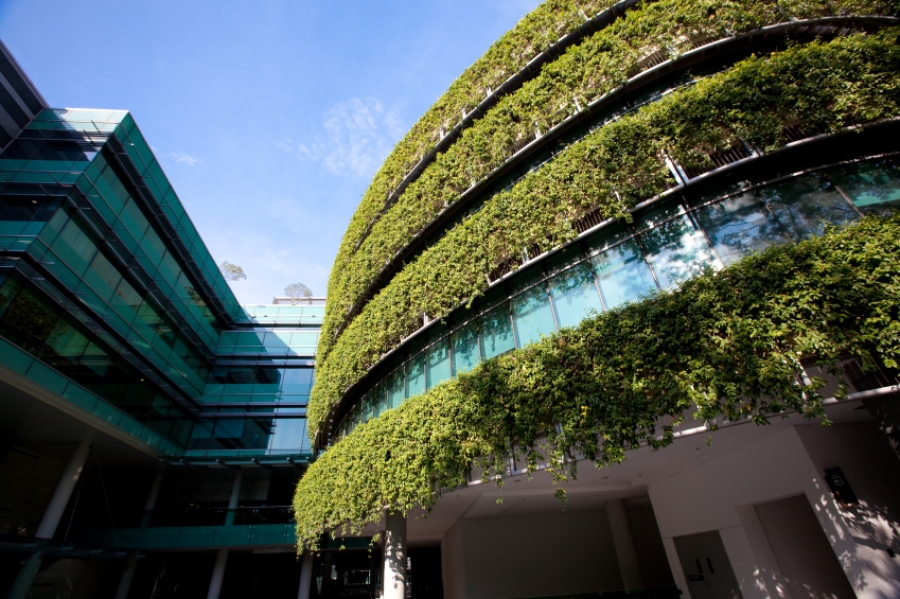Green Building Performance: Benefits to Post Occupancy Assessment
The performance of green buildings is a very hot topic in both the construction and real estate industries. As owners demand lower operating expenses, more and more new construction and existing building retrofits are being designed to a very high standard. However, as owners are finding out, those high design standards create only the opportunity for a green building. It’s what is done with that opportunity that defines both a building’s operations and the occupants inside it.

Assessing a green building’s performance in its post-occupancy stage has become the most effective way to insure that a building is doing what it was designed to do. It also highlights what occupants are doing to get the most out of the building’s design. A tenant or building owner always has the opportunity to utilize the space in a responsible way to complement green design and technology. This is often overlooked.
Key Assessment Points
In 2008, the Pacific Northwest National Laboratory did a study for the General Service Administration (GSA) titled “Assessing Green Building Performance: A Post Occupancy Evaluation of 12 GSA Buildings – Case Study.” In the study, 14 GSA buildings were compared based on whole-building performance and industry standards. Those standards included the areas of energy, water, maintenance and operations, waste, recycling, transportation, and occupant satisfaction metrics. The study involved eight LEED-certified buildings, two LEED-registered buildings, and two port-of-entry facilities that were examined separately due to the lack of a valid baseline for that building type. According to the study,
“The intent of this whole building performance measurement analysis is to inform [the] GSA on how its sustainably designed buildings are performing in comparison to traditionally designed buildings. Ideally, this information will be used to gain perspective, inform building design and construction, and advance the operation of [the] GSA’s buildings portfolio.”
In fact, the intent of any post-occupancy performance assessment should be to learn from what has been done, in order to improve the building or portfolio for the future. Here is what the GSA and many others are learning in their post-occupancy assessments:
-
Energy: What many assessments are finding is that energy-saving design strategies have beneficial results. Those results get even better when comparing a LEED or Energy Star building to a traditional building. The GSA study found that almost all of the buildings assessed had better-than-average thermal satisfaction, while all were capable of energy performance above the industry baseline. This equates to lower energy use without sacrificing comfort.
-
Water: The GSA’s study ran into the same problems that many other post-occupancy assessments encounter with respect to water. Without sub-metering in certain applications, some water usage numbers must be assumed. However, even under assumptions, the GSA buildings showed a 3% decrease in water usage compared to baseline levels. Many building owners are seeing this decrease exceed 20% when water usage is a priority during design and when WaterSense products are used.
-
Maintenance: Maintenance in LEED buildings has typically been thought of as more expensive because of the advanced technologies and materials used to achieve the LEED rating. However, the GSA’s study shows otherwise. More than half of their buildings came in below the baseline for maintenance within office buildings, showing a total of 13% below baseline. At the same time, occupants that were surveyed showed an above-baseline approval of the cleanliness of the buildings studied.
-
Occupant Satisfaction: The satisfaction of a building's tenants or occupants is often overlooked when analyzing a building’s performance. The GSA’s study proved that occupant satisfaction is worth including in a building post-occupancy assessment. In their analysis, the GSA found that green building is linked to an overall increase in their occupants' satisfaction. GSA occupant surveys showed an increased cleanliness satisfaction level above baseline, as well as the above-average thermal satisfaction mentioned previously. These two things, as well as excellent lighting satisfaction, helped the GSA buildings assessed to excel, with respect to their occupants' satisfaction levels.
According to the GSA study, “Overall, the GSA sustainably designed buildings investigated under this study cost less to operate, have excellent energy performance, and have occupants who are more satisfied with the overall building than the occupants in typical commercial buildings.” That statement shows that the post-occupancy assessment was able to answer many questions about the performance of these 14 buildings. Although an assessment like the one done by the Pacific Northwest National Laboratory for the GSA is just one of many tools that can be used, it proves that ongoing assessment is necessary for green building performance success.

Michael Tolson MBA, LEED AP
Michael Tolson is an entrepreneur focusing on "green" real estate development in Toledo, OH and surrounding areas. He currently owns Tolson Construction, and The Tolson Development Company. In an attempt to further drive businesses, Michael has completed an Executive MBA and a Graduate Specialization in finance from the University of Toledo. His companies focus on commercial and residential buildings using the United States Green Building Council’s LEED rating system. With this in mind, Michael has earned his LEED Accredited Professional designation.



